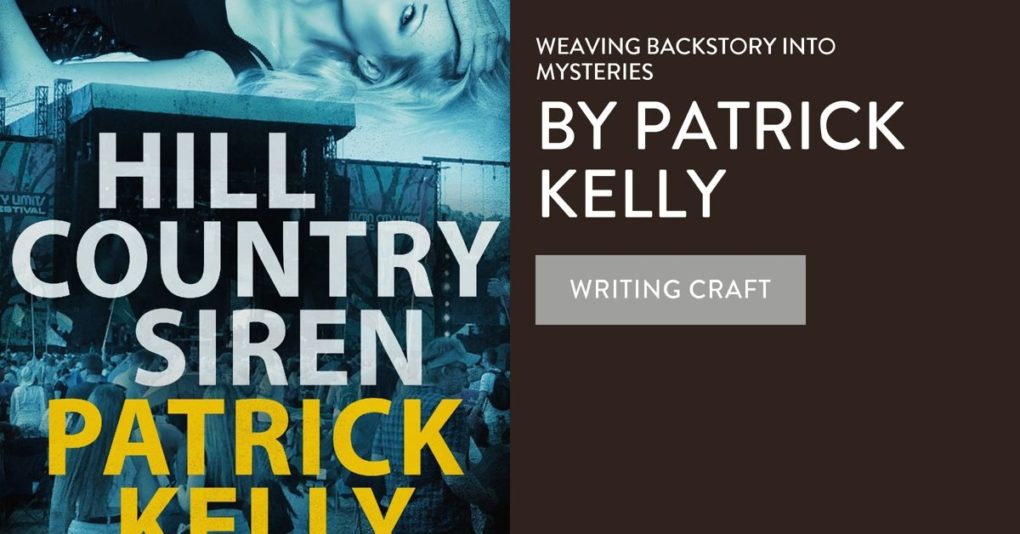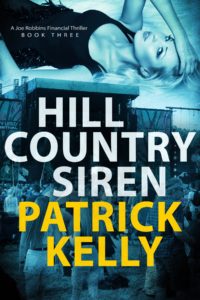For two and a half years I slaved over my first novel, arranged and rearranged the plot, constructed and deconstructed the characters, and polished each sentence twice. Then I gave it to my editor and waited . . . anxiously . . . for three weeks.
Her response came.
She loved the story and my writing but had some “meta-feedback.”
First suggestion: Delete the first five chapters.
OUCH!!!!
My baby.
What about my hero? Readers need to know where he comes from, why he’s here, and all about his relationship to the other characters. They care about these things.
Ah . . . actually . . . they don’t, at least not yet.
I need to SHOW readers the backstory, not TELL them (Heaven forbid I should tell them . . . SHOW don’t TELL).
Ah . . . actually . . . don’t do that, either.
What readers care about up front is THE FORWARD STORY not the backstory. They want to know what the story is about, and they want to be hooked, early.
Get to the forward story fast and weave the backstory in as you go.
To study how one successful author handled backstory, I suggest you read (or reread) the first chapter of The Hunger Games by Suzanne Collins.
I counted forty instances of backstory in the first chapter, which seemed like a lot, but Collins integrated it into the forward story so well that millions of readers (repeat-millions of readers) gobbled it up and went on to read the entire series.
Let’s take a quick look at how Collins wove backstory into the first few pages:
Katniss wakes up alone at home. Her little sister sleeps nestled against her mother in the next bed.
Backstory: Her mother was once beautiful but now looks worn and beaten down most of the time.
Backstory: Her sister, Prim, is so sweet she once gave the name Buttercup to an ugly, diseased kitten.
Backstory: Katniss is a hard-ass. She nearly drowned the same kitten because they couldn’t afford to feed it.
Katniss dresses in hunting clothes and leaves the house while the others sleep.
Backstory: She lives in District 12, where the industry is coal mining. The miners are poor, hunched over, with dirty fingernails.
Backstory: Nobody works today because of something called the Reaping.
Katniss walks through the poor section of town to the fence that surrounds District 12.
Backstory: The electric fence is seldom turned on because of a lack of power.
Backstory: Wild animals roam free outside the fence: cougars, bears, venomous snakes, etc.
Katniss sneaks under the fence.
Backstory: Katniss’ father died in a mining explosion five years earlier. She still mourns him.
Backstory: Katniss has supported her family for years by hunting game outside the fence.
Backstory: Her father taught her to hunt with bow and arrow.
And so on.
Notice that Collins feeds morsels of backstory to her readers between solid courses of live forward action. She continues this pattern for the entire chapter, until Katniss and Prim attend the Reaping, where Prim is randomly chosen to fight to the death in the hunger games.
At that point Collins has thoroughly hooked the reader and given essential backstory—all in eighteen pages.
How do you write a first chapter as compelling as that of The Hunger Games? I can’t help you there; much depends on the strength of your story world and characters and plot.
But I can give you some guidelines on how to handle backstory:
1. Weave backstory into the POV character’s thoughts naturally.
Collins introduces nearly all of the backstory through Katniss’ thoughts.
- Katniss and her hunting partner, Gale, have a conversation. There is no romance between them, or at least that’s how Katniss sees it.
- Katniss next thinks about how Gale could easily find a girlfriend because he’s so handsome.
- Then she thinks about how his physical traits, and hers, are similar to those of all the miners in District 12.
- Then she thinks about how her mother and Prim don’t look like the miners, because her mother comes from the merchant class.
- From there she thinks about how her mother (a merchant) married her father (a miner).
- And then it’s time for more forward action.
2. When in Doubt, Leave it Out
In early drafts of my second novel I included a boxing match in the prologue. I loved that scene. It ran two thousand words. But the boxing match wasn’t essential to the forward story, so I cut it out and put it in my Little Darlings drawer. It’s still there.
In the final draft, I conveyed the essential information (the hero knows how to box, he won the match, he loves his girlfriend) in a few short sentences of the first scene.
Our natural tendency is to supply too much backstory. The next time you write a first draft, consciously try to err on the side of too little backstory. Readers don’t need to know everything. In fact, they like intrigue, and writers create intrigue by withholding information.
3. Never share now what you can share later.
By chapter five of The Hunger Games Suzanne Collins is well into the forward story and rarely shares backstory, but in chapter four she includes a long flashback sequence that explains how Katniss learned to forage food. That information, while essential to the overall story, was not required to hook the reader, so Collins waited and the result was a shorter and faster first chapter.
4. Tell don’t Show
If depth is not essential to the forward story feel free to tell the backstory in as few words as possible.
Katniss loved her father. She still has nightmares about the explosion that killed him. Suzanne Collins could have devoted an entire chapter to a flashback scene of Katniss with her father to show the reader their relationship. Instead, Collins told the reader the essentials in four short sentences, a total of forty words.
No reader cried over those four sentences. But that’s okay, because the relationship was not important for the forward story.
Back to my first novel and my editor’s suggestion to delete the first five chapters: In the end, I compromised by cutting two chapters and shortening the other three. But if I knew backstory then as I know it now, I’d take another crack at deleting the first five chapters.
Best of luck with weaving backstory, and I hope you write often, write well, and earn faithful readers.
Patrick Kelly holds a BA in software engineering from the University of Virginia and an MBA in finance from Carnegie Mellon University.
finance from Carnegie Mellon University.
He served as Chief Financial Officer for six different companies before beginning his career as an author of the Joe Robbins Financial Thriller series. For more information on Patrick Kelly or his latest novel, Hill Country Siren, please visit patrickkellystories.com
Click To Tweet



Those are very good suggestions. Revealing character and backstory layer by layer is how people share themselves in real life, anyway. You don’t spill your whole story to someone the first time you have a conversation…
I think we all start as writing by including too much backstory. We do learn over time how to weave it into the story better.
Great advice, Patrick. As a reader, I’d say too much backstory at first does slow my interest. I want the ‘meat and potatoes’ of the story first with a little gravy drizzled in as I go. It’s easier to like a character if you get to know why he’s the way he is as he does what he’s supposed to do.
Thoughts in Progress
and MC Book Tours
Using the character’s thoughts is a great way to introduce backstory. It helps to keep it short, too.
Thank you for letting me write a guest post for the blog. I love to write . . . and talk . . . about writing!
Thanks so much for the post, Patrick! I thought you made some fascinating points.
Knowing when, and how much, backstory to weave into the opening is tough to do. I have a hard time with this one. Deleting five chapters would just about kill me! Glad you survived the ordeal Patrick :)
Hi Elizabeth and Patrick … such an interesting post – so informative with examples too … I enjoyed it – and only write for my blog … but I guess if I ever ventured into story telling … I’d come back here for reminders – cheers Hilary
I struggle with backstory quite a bit, what is too much, too little. Thanks for your points and for working through the example from Hunger Games, very helpful.
[…] Weaving Backstory into Mysteries – Elizabeth Spann Craig […]